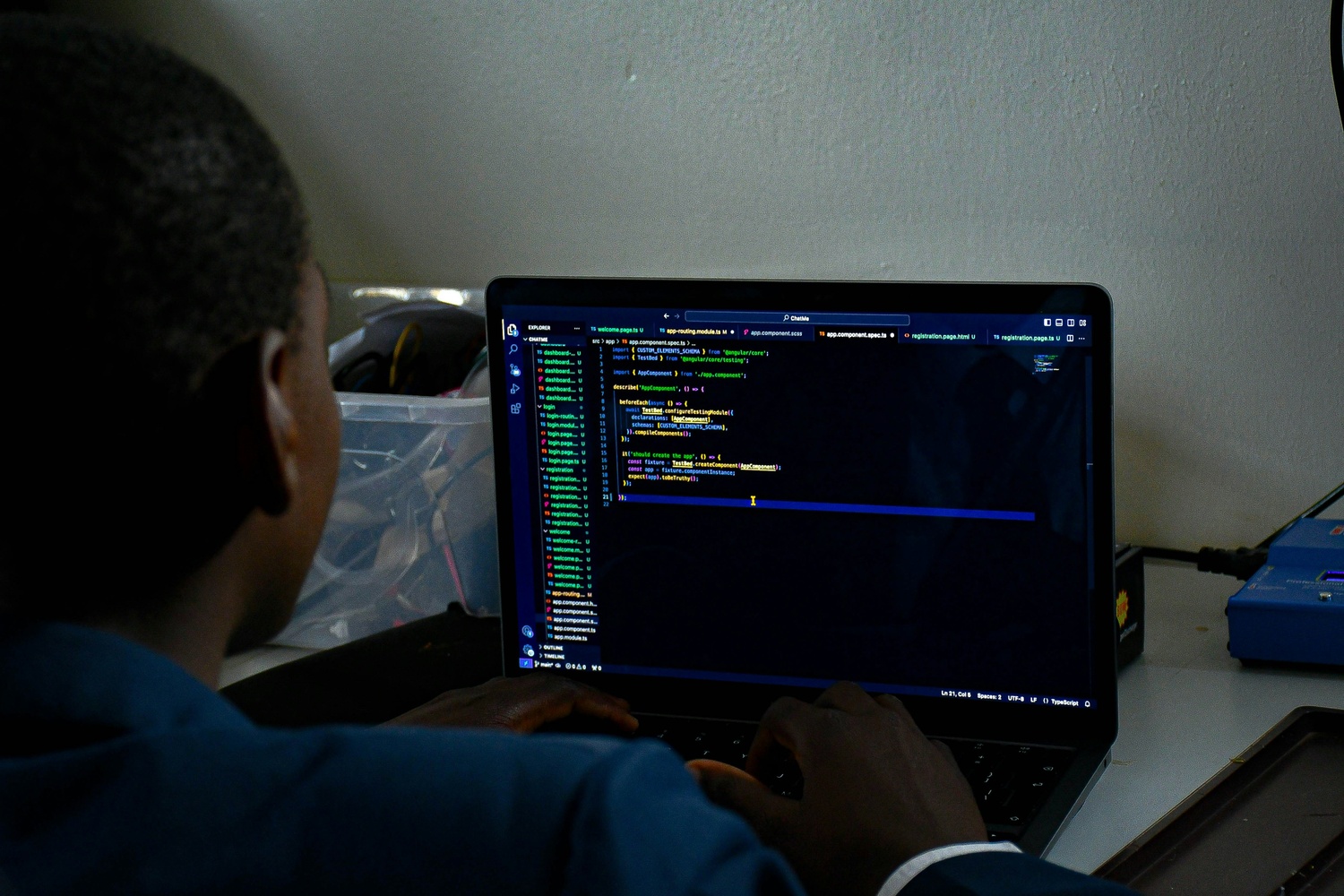Look, if you’re knee-deep in DevOps, you know the drill: shipping code fast feels great until a vulnerability sneaks in and bites you later. That’s where these top tools from powerhouse companies come in-they weave security right into your workflows so you don’t have to play catch-up. We’re talking automated scans that catch code flaws early, runtime shields that spot threats on the fly, and compliance checks that don’t slow you down. In 2025, with attacks getting sneakier, picking the right ones isn’t optional; it’s how you build without paranoia. Let’s dive into the standouts that real teams swear by.

1. AppFirst
AppFirst was built to let developers define what their app needs – CPU, database, networking, Docker image – and it spins up the rest across AWS, Azure, or GCP. No Terraform, no YAML, no VPC wrestling. AppFirst handles IAM, secrets, logging, monitoring, and alerts behind the scenes, allowing code to ship without infrastructure reviews stalling progress.
Switching clouds is seamless: the app specification remains the same, and AppFirst maps it to the new provider’s best practices. SaaS deployment keeps it simple, while self-hosted options accommodate stricter compliance. Either way, costs and changes remain visible per app and environment.
Faits marquants :
- App-defined provisioning for compute, DB, messaging
- Built-in security, observability, audit logs
- Multi-cloud with consistent best practices
- SaaS or self-hosted options
- No custom infra tooling required
Pour qui c'est le mieux :
- Developers dodging config headaches
- Organizations enforcing standards without platform crews
- Fast-moving groups cutting DevOps overhead
Informations de contact :
- Site web : www.appfirst.dev

2. Semgrep
Engineers at Semgrep focus on catching issues in code without drowning developers in noise. The tool runs static analysis across SAST, SCA, and secrets detection, using rules that anyone can read and tweak. AI steps in to filter out findings that don’t matter, so pull requests stay clean and actionable fixes land right in the workflow.
Context matters here. Reachability analysis cuts down on dependency alerts that never get exploited, and the assistant suggests code changes when it spots something real. Scans finish fast enough to fit into any commit cycle, whether in the CLI or baked into CI/CD.
Faits marquants :
- AI-powered noise filtering for SAST, SCA, and secrets
- Reachability analysis on dependencies
- Remediation guidance and auto-fixes in PRs, Jira, or IDEs
- Custom rules without heavy configuration
- Transparent, code-like rule syntax
- Fast median scan time in CI
Pour qui c'est le mieux :
- Developers who want security feedback without leaving their tools
- Security engineers scaling rules across languages
- Teams tired of false positives in traditional scanners
Informations de contact :
- Website: semgrep.dev
- LinkedIn: www.linkedin.com/company/semgrep
- Twitter: x.com/semgrep

3. Legit Security
Legit Security builds a platform that ties together everything from code to runtime. It pulls in findings from existing scanners, correlates them, and shows a single view of risk across the SDLC. AI helps prioritize what actually threatens the business, not just what scores high on CVSS.
Automation handles the grunt work. The system orchestrates remediation, sets guardrails, and watches for material changes that could open holes. Secrets detection digs into Git history, builds logs, and even chat apps to stop leaks early.
Faits marquants :
- Unified view from code to cloud
- AI-driven prioritization with business context
- Secrets scanning beyond source code
- Software supply chain mapping and SBOM export
- Policy enforcement and compliance reporting
- Integration with AI code assistants
Pour qui c'est le mieux :
- AppSec leads needing visibility across scattered tools
- Organizations adopting AI-generated code
- Teams proving compliance without manual evidence gathering
Informations de contact :
- Site web : www.legitsecurity.com
- Phone: (209) 414-4196
- Email: info@legitsecurity.com
- Address: 100 Summer Street, Suite 1600 Boston, MA 02110
- LinkedIn : www.linkedin.com/company/legitsecurity
- Twitter : x.com/LegitSecurity1
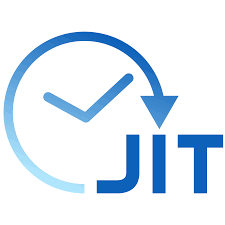
4. Jit
Jit packages security tasks into AI agents that handle scanning, triage, and remediation end-to-end. Agents learn from policies and architecture to decide what needs attention and draft clear fix plans for developers. Feedback shows up directly in IDEs or source control, keeping the flow uninterrupted.
The platform maps the environment to compliance frameworks and generates audit reports automatically. It covers code, cloud, and pipelines, then ties everything into a central backlog so nothing slips through.
Faits marquants :
- AI agents for triage, remediation plans, and ticket creation
- Real-time code review in IDEs and source control
- Compliance mapping and auto-generated reports
- Context from policies, architecture, and runtime
- Full vulnerability lifecycle coverage
- Integrations with common dev tools
Pour qui c'est le mieux :
- Product security engineers buried in alerts
- Developers who prefer fixes over lectures
- Startups building AppSec from scratch
Informations de contact :
- Website: www.jit.io
- Address: 100 Summer Street Boston, MA, 02110 USA
- Courriel : contact@jit.io
- LinkedIn: www.linkedin.com/company/jit
- Facebook: www.facebook.com/thejitcompany
- Twitter: x.com/jit_io

5. Atlassian
Atlassian builds tools that keep software work flowing from planning to release. Jira handles tracking issues, sprints, and bugs while Confluence stores docs and decisions in one spot. The setup fits agile ways, with templates for scrum or DevOps pipelines ready to go.
Cloud versions cut server hassle, and the marketplace adds extras for custom needs. Access stays open across sizes, from small startups to big firms.
Faits marquants :
- Issue tracking with scrum and bug templates
- Document collaboration in Confluence
- Cloud hosting with less maintenance
- Marketplace for extensions
- Free start option available
Pour qui c'est le mieux :
- Software crews running agile processes
- Groups needing shared knowledge bases
- Companies shifting to cloud workflows
Informations de contact :
- Site web : www.atlassian.com
- Téléphone : +1 415 701 1110
- Adresse : 350 Bush Street Floor 13 San Francisco, CA 94104 États-Unis
- LinkedIn: www.linkedin.com/company/atlassian
- Facebook: www.facebook.com/Atlassian
- Twitter: x.com/atlassian

6. Bytebase
Bytebase manages database changes with review steps and GitOps hooks. Schema migrations run through lint checks and approvals before hitting production. The SQL editor offers auto-complete and masks sensitive data on the fly.
On-premise deployment keeps everything in-house, with audit logs and one-click rollbacks for safety. It works across major databases.
Faits marquants :
- Schema migration workflow with linting
- Just-in-time access controls
- Data masking by role
- Audit logs and rollback snapshots
- GitOps integration option
Pour qui c'est le mieux :
- DBAs handling multi-environment setups
- Crews enforcing change reviews
- Setups needing self-hosted control
Informations de contact :
- Website: www.bytebase.com
- LinkedIn: www.linkedin.com/company/bytebase
- Twitter: x.com/Bytebase
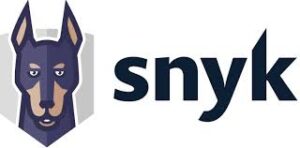
7. Snyk
Snyk scans code, dependencies, containers, and infrastructure configs to spot issues early. The platform uses AI to rank findings by exploit risk and suggests fixes that land in pull requests or IDEs. It hooks into CI/CD pipelines without forcing big changes to existing setups.
DeepCode AI drives the analysis, trained on security patterns to cut noise. Coverage runs from SAST and SCA to IaC and DAST, all feeding a central dashboard for tracking progress.
Faits marquants :
- AI prioritization of vulnerabilities
- SAST, SCA, container, and IaC scanning
- Fix suggestions in IDE or PR
- DAST for runtime testing
- Free account to start scanning
Pour qui c'est le mieux :
- Developers wanting fixes in their flow
- Security leads consolidating AppSec tools
- Crews building AI-heavy apps
Informations de contact :
- Site web : snyk.io
- Address: Suite 4, 7th Floor, 50 Broadway London United Kingdom
- LinkedIn : www.linkedin.com/company/snyk
- Twitter : x.com/snyksec
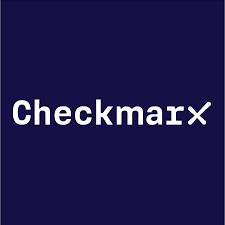
8. Checkmarx
Checkmarx bundles SAST, SCA, DAST, and IaC checks into one platform with ASPM to connect the dots. AI agents in the IDE explain risks and draft secure code patches on the spot. Scans cover custom code, open-source packages, containers, and cloud configs.
The system correlates signals to surface exploitable paths, not just raw CVEs. Repository health scores flag risky third-party code, and secrets detection hunts leaks across the SDLC.
Faits marquants :
- Unified SAST, SCA, DAST, IaC
- AI remediation in IDE
- ASPM for risk correlation
- Secrets and malicious package checks
- Container and API security
Pour qui c'est le mieux :
- Enterprise AppSec managing big codebases
- Developers needing in-IDE guidance
- Teams shifting left on supply chain risk
Informations de contact :
- Site web : checkmarx.com
- Adresse : 140 E. Ridgewood Avenue, Suite 415, South Tower 140 E. Ridgewood Avenue, Suite 415, South Tower, Paramus, NJ 07652
- LinkedIn : www.linkedin.com/company/checkmarx
- Facebook : www.facebook.com/Checkmarx.Source.Code.Analysis
- Twitter : x.com/checkmarx
9. GitLab
GitLab wraps source control, CI/CD, and security scans in a single app. Built-in checks for vulnerabilities, secrets, and license issues run on every commit. AI features suggest code and answer questions right in the editor.
Pipelines automate from plan to deploy, with security gates baked in. The setup keeps everything in one place, cutting tool switching.
Faits marquants :
- Integrated vuln and secrets scanning
- AI code suggestions in IDE
- Full CI/CD with security gates
- Compliance tracking in pipelines
- Free trial for premium AI features
Pour qui c'est le mieux :
- DevOps crews wanting one platform
- Remote setups streamlining workflows
- Teams adding AI to daily coding
Informations de contact :
- Website: gitlab.com
- LinkedIn : www.linkedin.com/company/gitlab-com
- Facebook : www.facebook.com/gitlab
- Twitter : x.com/gitlab

10. Aqua Security
Aqua Security covers the full cloud-native stack with checks from code commits to running workloads. Scans hit vulnerabilities in supply chain layers, IaC files, containers, and serverless setups before anything deploys. Runtime controls watch for odd behavior and block attacks like prompt injections in AI apps.
Posture tools map multi-cloud environments and rank risks by context. Trivy, the open-source scanner, handles image and repo checks for anyone to grab and run.
Faits marquants :
- Code to runtime protection
- Supply chain and AI risk scanning
- Détection des menaces en cours d'exécution
- Multi-cloud posture visibility
- Open-source Trivy scanner
Pour qui c'est le mieux :
- Cloud-native shops building on Kubernetes
- DevOps handling serverless or containers
- Security folks needing runtime guards
Informations de contact :
- Site web : www.aquasec.com
- Phone: 972-3-7207404
- Address: PO Box 396 Burlington, MA 01803 United States
- LinkedIn : www.linkedin.com/company/aquasecteam
- Facebook : www.facebook.com/AquaSecTeam
- Twitter : x.com/AquaSecTeam
- Instagram : www.instagram.com/aquaseclife

11. OX Security
OX Security plugs an AI agent straight into coding tools to stop flaws during generation. The agent pulls live context from code, APIs, cloud configs, and runtime data to tailor checks for each project. Policies get enforced automatically, turning rules into part of the fix flow.
A central data lake keeps everything synced with the latest threats and org priorities. The setup cuts down on manual triage by focusing only on reachable issues.
Faits marquants :
- AI agent in IDE for real-time fixes
- Dynamic context from code to runtime
- Application automatisée des politiques
- Threat modeling across stack
- Integrations with open-source tools
Pour qui c'est le mieux :
- Teams heavy on AI code assistants
- AppSec leads drowning in alerts
- Builders wanting security baked into workflows
Informations de contact :
- Site web : www.ox.security
- Email: contact@ox.security
- Adresse : 488 Madison Ave : 488 Madison Ave, Suite 1103, New York, NY 10022
- LinkedIn : www.linkedin.com/company/ox-security
- Twitter: x.com/ox_security
- Instagram : www.instagram.com/lifeatox

12. Veracode
Veracode runs scans across the whole SDLC to catch flaws in code and dependencies. The platform uses AI to auto-fix issues and ranks risks so fixes hit what matters. Governance tools track compliance without extra paperwork.
Developers get guidance right in their IDE, whether writing fresh code or pulling in libraries. Security leads see a full picture of app risk in one dashboard.
Faits marquants :
- SDLC-wide scanning and auto-fixes
- Low false positives with AI ranking
- IDE integration for devs
- Compliance and policy enforcement
- ASPM for org-wide visibility
Pour qui c'est le mieux :
- Execs needing risk oversight
- Security folks cutting noise
- Coders shipping secure apps fast
Informations de contact :
- Site web : www.veracode.com
- Phone: +44 (0)20 3761 5501
- Email: support@veracode.com
- Address: 36 Queen Street, London, EC4R 1BN, United Kingdom
- LinkedIn : www.linkedin.com/company/veracode
- Facebook : www.facebook.com/VeracodeInc
- Twitter : x.com/Veracode
- Instagram : www.instagram.com/veracode

13. Sysdig
Sysdig watches cloud workloads in real time with runtime insights powered by Falco. Agentic AI cuts through alerts to show actual threats and suggests next steps. The setup covers build to production without blind spots.
Open-source roots keep things transparent and customizable. Scans hit vulns early while runtime blocks active attacks.
Faits marquants :
- Real-time runtime defense
- AI-guided threat response
- Falco-based open-source engine
- Build and runtime coverage
- Noise reduction in alerts
Pour qui c'est le mieux :
- Cloud ops defending live systems
- Teams mixing speed and safety
- Open-source fans wanting control
Informations de contact :
- Website: www.sysdig.com
- Phone: 1-415-872-9473
- Email: sales@sysdig.com
- Address: 135 Main St, San Francisco, CA 94105
- LinkedIn: www.linkedin.com/company/sysdig
- Twitter: x.com/sysdig

14. Kiuwan
Kiuwan does SAST and SCA to spot code flaws and third-party risks. It hooks into IDEs and supports dozens of languages for smooth checks during coding. Reports line up with OWASP and CWE for easy audits.
Hybrid or on-prem options fit different setups. Quality add-ons catch style issues alongside security holes.
Faits marquants :
- SAST compliant with major standards
- SCA for open-source risks
- IDE and CI/CD integration
- Hybrid-cloud or on-prem deploy
- Actionable security reports
Pour qui c'est le mieux :
- Devs in multi-language shops
- Compliance-heavy environments
- Teams blending security and quality
Informations de contact :
- Website: www.kiuwan.com
- LinkedIn: www.linkedin.com/company/kiuwan
- Facebook: www.facebook.com/Kiuwansoftware
- Twitter: x.com/Kiuwan

15. Wiz
Wiz scans every layer of cloud setups to spot risks without agents messing with workloads. The graph connects dots between vulns, misconfigs, and attack paths so fixes target real exposures. Runtime detection kicks in for active threats, blending with dev workflows to keep builds rolling.
Developers get feedback in code or CI/CD, while security folks track posture across AWS, Azure, and more. Integrations pull in data from existing tools, cutting silos without big overhauls.
Faits marquants :
- Agentless scanning for full cloud visibility
- Risk prioritization via security graph
- Runtime threat response
- Code and pipeline security checks
- Bi-directional tool integrations
Pour qui c'est le mieux :
- Cloud ops handling multi-provider environments
- DevSecOps bridging build and runtime
- Security leads focusing on critical paths
Informations de contact :
- Website: www.wiz.io
- LinkedIn: www.linkedin.com/company/wizsecurity
- Twitter: x.com/wiz_io
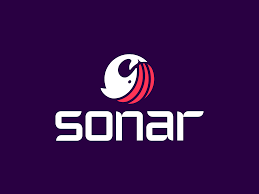
16. Sonar
Sonar checks code quality and security across languages, frameworks, and IaC in IDEs, CI/CD, or servers. It flags bugs, smells, and vulns early, including in AI-generated or open-source bits. Remediation uses AI to suggest fixes and tidy up legacy code.
Cloud or self-managed options fit different scales, with community input shaping updates. Reports track improvements over time, helping maintain clean repos without halting progress.
Faits marquants :
- Multi-language code analysis
- Security for AI and open-source code
- AI-driven fix suggestions
- IDE and pipeline integration
- Cloud or on-prem deployment
Pour qui c'est le mieux :
- Developers catching issues on the fly
- Ops enforcing standards in pipelines
- Groups modernizing old codebases
Informations de contact :
- Website: www.sonarsource.com
- Address: Geneva, Switzerland, Chemin de Blandonnet 10, CH – 1214, Vernier
- LinkedIn: www.linkedin.com/company/sonarsource
- Twitter: x.com/sonarsource
Conclusion
Look, no single tool is going to magically lock down your pipeline-that’s a fantasy. What matters is picking the ones that actually fit how your code moves, from commit to production. Some scan early, others watch runtime; a few do both without choking your flow. Mix the right pieces, and you stop chasing alerts while still shipping fast.
At the end of the day, security isn’t about stacking tools-it’s about cutting the busywork so developers build, not babysit infra. Try a couple, see what sticks, and keep the ones that let you focus on products, not platforms.


